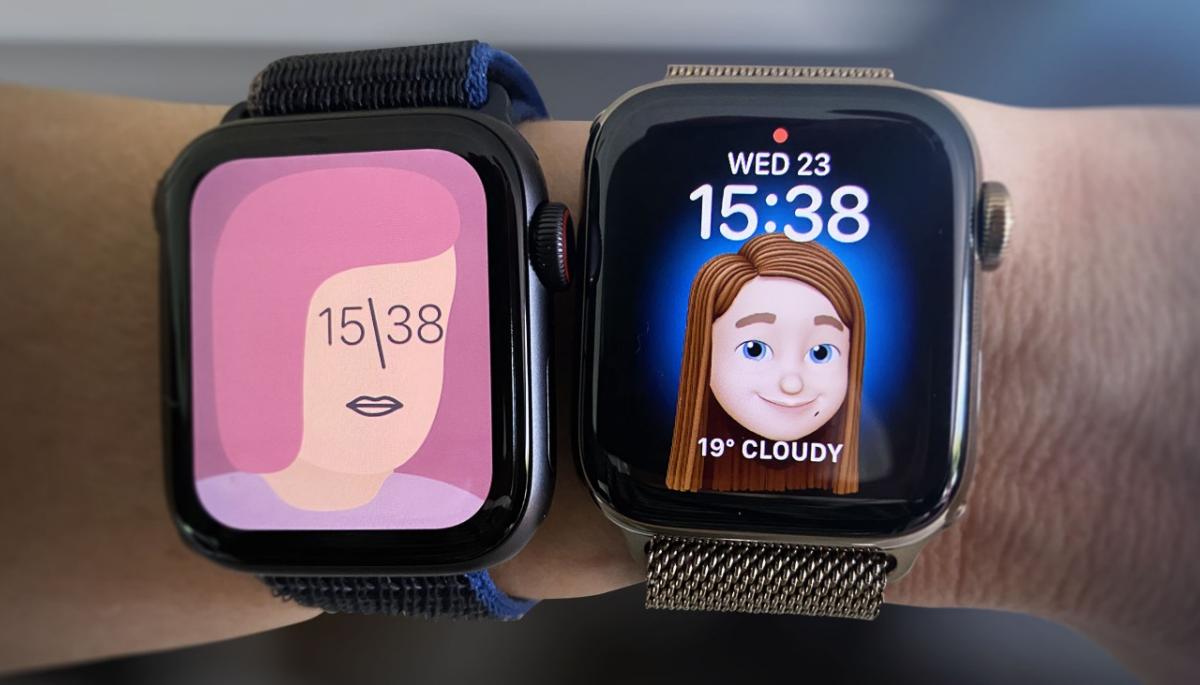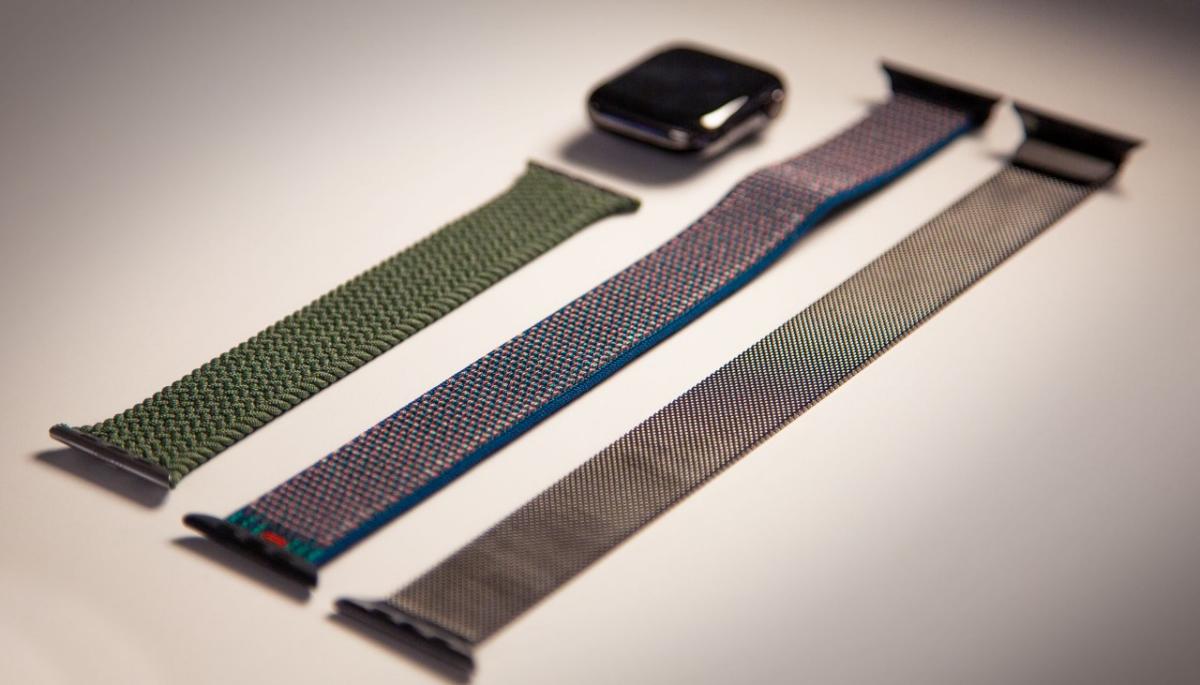
The day I first gave my hand to an Apple Watch was one to remember. Seduced by its stylish smarts, I dismissed my ageing analogue with a flick of the wrist.
I wasn't alone in my adoration. Apple Watch quickly dominated the smartwatch market.
Five years later, the latest model Series 6 has a serious rival - from within. Slightly more modest but still with plenty of substance, could the new, cheaper Apple Watch SE come out on top?
I've spent a few days reviewing both watches to help you decide which one you should choose.
Computing power
Both watches are powerful and to be honest, it might be hard for those who own a Series 5 or those who buy a Watch SE to really tell the difference.
But because Series 6 has the S6 chip - which is based on the A13 Bionic chip found in the iPhone 11 - it's the fastest and will stay fast through future updates.
The Apple Watch SE sports the same processor as the Series 5. If you own an earlier model such as the Series 3 from 2017, the difference is much more noticeable as it's twice as fast.
Design
Both watches have the same display and resolution, are water resistant and work with Apple's new bands, the Solo and Braided loops. There are plenty of other straps to choose from, too.
Both watches come in standard silver, grey and gold aluminum but in Series 6 there are also the options of blue and red and there are steel and titanium choices.
The always-on display is reserved for Series 6 and it's meant to be two and half times brighter than its predecessor, the Series 5. It's certainly much easier to see the watch face when outside. Interestingly, I found the Apple Watch SE to have a very bright display too.

Hardware and software
Only Series 6 out of the two watches has the much heralded new blood oxygen sensor. This can be useful for determining overall respiratory and cardiac health.
Over a period of time, trends could spot problems such as asthma and sleep apnea - even COVID-19. But this sensor shouldn't be used to make medical diagnoses, which even Apple points that out.
To take a reading I rested my arm on a flat surface such as a table and 15 seconds later I had a result, as long as I didn't move. If I did, the reading was unsuccessful.
I got a score of 92 percent, which didn't mean much to me, but I found was satisfyingly normal after looking it up.
It's worth noting that rivals such as Fitbit and Garmin also have the ability to track SpO2. Samsung's Galaxy Watch 3 also does, but only on demand and not automatically.
Apple Watch SE and Series 6 have the optical heart sensor, which measures heart rate, but the ECG app that can detect irregular heart rhythms is only found in the more premium model. The average user who is in good health needn't worry too much if they choose the SE and miss out on this feature.
Series 6 sports a U1 chip. This helps a device find other devices more precisely, so is useful for things like AirDrop or to one day unlock a car.
Both watches run on WatchOS 7. They can both provide real-time elevation monitoring, which can be used during an outdoor work-out, fall detection, noise monitoring and emergency SOS.
They can also both track sleep, handwashing and a greater number of fitness workouts than before.

As a mother with a newborn, sleep is eluding me at the moment so I was keen to try out the sleep tracker. While interesting, and confirming the fact that I'm a walking zombie, it didn't give as much information on the quality of sleep as other trackers on the market.
However, considering I'd run it all night, the drop in battery power wasn't too bad at all. Not that I like taking my watch off during the day at all. I need all the help I can get with closing my activity rings.
I found the handwashing feature a bit quirky. It has to be enabled to get it to work and then the countdown feature, which counts down from 20 seconds, didn't seem to kick in every time. I'm still figuring it out, so maybe I'm not using it properly.
Both watches will work with Fitness Plus, Apple's cool new feature which brings guided workouts to the Apple Watch and other Apple devices. Stats are displayed on the watch and instructors will use it as a training tool to push you during a workout.
This was previewed at the keynote and I've seen it in a demo but it hasn't yet launched, but I'll be very keen to give it a go when it does. Luckily, New Zealand will be one of the first countries to get it.
Charging
With the Series 6, charging time has been boosted so it now only takes one and half hours to reach 100 percent. The SE takes an hour longer.
Neither watch comes with a wall charger in the box, just the cable. Luckily, I have a drawer full of old chargers.
The verdict
There's no denying that Apple Watch Series 6 is very desirable and for those who want the best that money can buy, it's an obvious choice. An always-on display, more sensors, more choice in finishes and the knowledge that what's on your wrist is the fanciest you can get.
However, if you're already sporting last year's Series 5, you'll probably be content putting off upgrading for another year unless that oxygen sensor is a must.
If money matters, the Apple Watch SE will more than suffice. It will be great for those people who don't need to have several high-end health sensors but are still interested in fitness, for those who want to use Apple Pay or use their watch to unlock their Mac.
The SE is also great for those who are keen to buy one for an elderly relative, or perhaps a child. It's also a great option for those who are wearing a much older Apple watch.
A final note: if you've been eying up an Apple Watch SE for a younger family member, you'll be disappointed that the Watch OS7 feature Family Setup - which lets the wearer pair their iPhone to someone else's watch and apply controls without that person also needing an iPhone - won't be available in New Zealand. At least not yet.
Both new Apple watches are on sale in New Zealand now. The Apple Watch Series 6 costs from $699 (GPS) and $899 (GPS and cellular), while the Apple Watch SE costs from $479 (GPS) and $579 (GPS and cellular).


